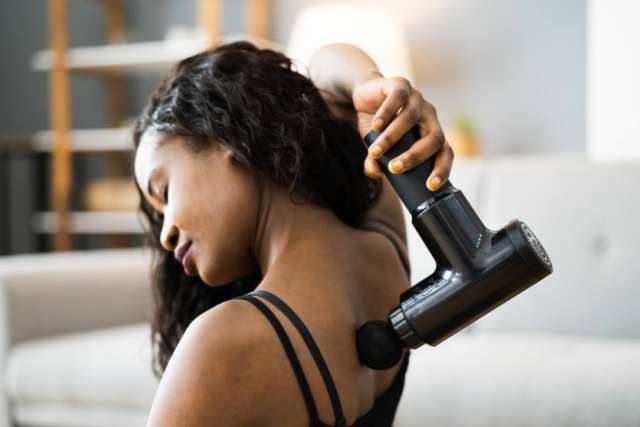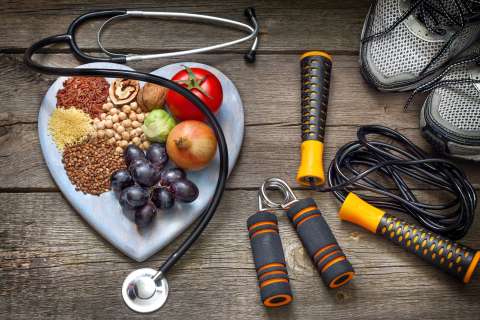A good massage can reduce stress, ease pain and improve circulation. But getting professional massages on a regular basis can be time-consuming and expensive.
As a DIY alternative, people are turning to massage guns, which deliver percussion therapy in the comfort of your own home. Before you run out and jump on the massage gun bandwagon, however, you should understand what these devices do, how they work and how you should be using them.
Here’s what you should know:
What is percussive therapy?
Percussive (also called percussion) massage uses rapid and repetitive pressure combined with vibration therapy. The massage head moves quickly and forcefully, applying pressure directly to your soft tissue, while the vibrations engage the outer layer of skin.
Massage guns are hand-held devices that deliver percussive therapy. They offer features that vary according to brand and model. Before purchasing a massager, consider its:
- Speeds, because more options and speeds give the gun versatility
- Weight, since you might be holding the gun for 10 minutes or more (choose a massager in the 2- to 4-pound range)
- Noise, which might affect where you use the gun and how relaxing the experience is
- Battery, so that the massage gun is ready when you need it
Massage gun benefits
Whether you are an athlete or not, percussive therapy offers many benefits, including:
Improved mobility
Your stiff neck, sore back or aching muscles may be due to fascia, layers of tissue and fluid that surround and stabilize your bones, muscles, nerves and blood vessels. Certain factors, such as repetitive movement, trauma or limited physical activity (such as sleeping), can cause the fascia to thicken and tighten up around the muscles. When that happens, you’re left with pain and limited mobility.
Percussive massage helps distribute the thickened fascia fluid to relieve the pressure and tightness you feel. Repeated pressure at high speed thins the fluids, making the fascia more pliable so that your muscle can move more easily and efficiently.
Reduced soreness after exercise
Lactic acid builds up in your muscles after exercise or other activity. This build-up often causes pain and soreness. When you use a massage gun after a workout, the percussion forces muscle fibers to release lactic acid, reducing the soreness you’ll feel.
Decreased delayed onset muscle soreness
It’s common to experience pain and soreness 24 to 72 hours after an unfamiliar physical activity such as a new exercise routine or rehabilitation after surgery or injury. The discomfort and muscular pain, called delayed onset muscle soreness (DOMS), results from tiny muscle fiber tears. Research shows that vibration therapy increases skin temperature, blood flow and hormonal responses to reduce inflammation and pain associated with DOMS.
How and when to use a massage gun
After you identify the muscle areas you want to target, turn the massage gun on at a low speed and move it slowly across the muscle. You can adjust the speed and pressure as needed and according to your comfort level. Aim to keep the massager on muscles only, avoiding joints and bones.
You can use a massage gun daily (and multiple times a day) but try not to target any single muscle group for more than two minutes in a session. When you’re just starting out, experts recommend focusing on one area for 10 to 30 seconds.
Consider using a massage gun:
- Before a workout: Massaging the muscles you’ll be using before a workout warms them and decreases the chance of injury. Use percussive massage on multiple muscle groups including calves and thighs to prep them for activity.
- After a workout: When you make percussive massage part of your post-workout routine, you decrease the chance of muscle soreness that typically sets in immediately and for days after.
- Whenever you have muscle tension or stress: A massage session when you wake each morning can improve your range of motion and muscle movement. In the evening, it offers deep relaxation that may help you sleep.
If you have ongoing muscle soreness or stiffness, reach out to your primary care physician, who can help you establish a safe routine for physical activity and massage.



